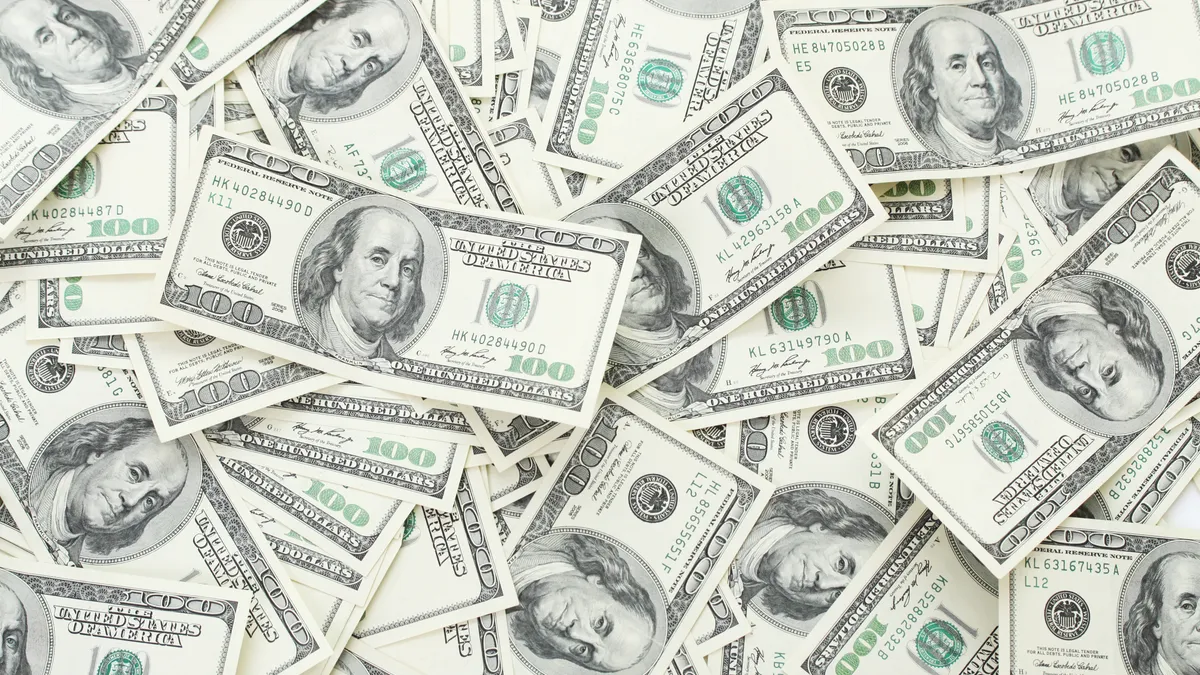Dive Brief:
- A gauge of inflation excluding volatile food and energy prices and favored by the Federal Reserve rose 0.3% in September, the biggest gain since April and a validation of forecasts that policymakers on Nov. 7 will trim borrowing costs by just a quarter-point.
- The core personal consumption expenditures price index increased 2.7% on an annual basis, the Bureau of Economic Analysis said Thursday. The inflation measure including food and energy prices rose 2.1% over the 12-month period, slightly above the Fed’s 2% target.
- Growth in wages and salaries fueled 0.4% growth in inflation-adjusted consumer spending in September compared with 0.2% in August, reinforcing recent signs of increasing consumer confidence.
Dive Insight:
During the past month traders in interest rate futures slashed from 34% to zero the probability that the Fed will cut the federal funds rate by a half percentage point at its Nov. 6-7 meeting, according to the CME FedWatch Tool.
The central bank cut the main interest rate in mid-September by a half percentage point to a range between 4.75% to 5%.
Traders see 93% odds of a quarter-point easing next week.
The market shift coincided with reports of unexpected strength in the economy and household spending.
Gross domestic product rose at a 2.8% annual rate during the third quarter, the Commerce Department said Wednesday, following gains of 1.4% and 3% in the first and second quarters, respectively.
The economy will probably expand at a 2.7% annual rate during Q4, the Atlanta Fed forecast on Thursday.
Consumer confidence has remained robust even with the labor market cooling and borrowing costs persisting far above the unusually low rates early this decade.
The mood among consumers improved in October more than any month since March 2021, the Conference Board said Wednesday, in a report on its Consumer Confidence Index.
“In October’s reading all five components of the index improved,” Conference Board Chief Economist Dana Peterson said in a statement.
“Consumers’ assessments of current business conditions turned positive,” she said. Their outlook was bright on the availability of jobs, future business conditions and future income and, “for the first time since July 2023, they showed some cautious optimism about future job availability.”
A survey by the University of Michigan showed consumer sentiment hitting a six-month high in October thanks to lower borrowing costs and expectations of stable inflation.
Consumers anticipate 2.7% inflation in 12 months, unchanged from September and within the 2.3% to 3% range during the two years before the pandemic, Joanne Hsu, director of the university’s consumer survey, said in an Oct. 25 statement. Long-run inflation expectations eased to 3% from 3.1% in September.
Despite favorable economic data and household sentiment, several unresolved policy challenges complicate Fed efforts to unwind its most aggressive tightening in four decades without triggering a downturn, American Action Forum President Douglas Holtz-Eakin said Thursday.
“The near-term outlook is quite solid and may yet achieve the soft-landing nirvana,” he said in a blog post.
“But the outlook is clouded by policy risks: government funding battles, debt ceiling showdowns, tariffs, large deficits, and sunsets of the 2017 tax reform,” Holtz-Eakin said. “Resolving those policy risks successfully will be the key to the next year’s economic performance.”












